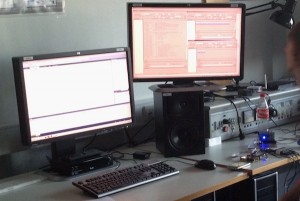During the seminar on embedded systems five student teams worked on five different projects and wrote a paper about the results. The topics were:
- Home Automation with Arduino
- StepPiano – an Installation with Arduino
- CAN Bus Simulation with CANoe from Vector
- iBooze – An iPhone controlled cocktail mixing machine
- Developing an iOS Accessory
The paper abstracts are listed below. The paper on developing an iOS accessory can not be published due to an Apple NDA.
Home Automation with Arduino
(Filipe Campos Santos and Duygu Kücük)
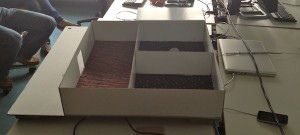
As an open-source hardware platform with easy-to- use software, Arduino offers a lot of space for creative projects. In this paper, we want to introduce one of those projects in the field of home automation. Our goal was to create a house model and connect it with the Arduino platform. The major component of our project was the Arduino Ethernet shield in order to control LEDs and motors, and reading sensors. Therefore we wrote a user-friendly web client which communicates with the Ethernet shield of Arduino. In this paper we want to focus on the steps we took to realize this project.
StepPiano – an Installation with Arduino
(Johannes Klinger, Katja Haße and Vanessa Döbler)
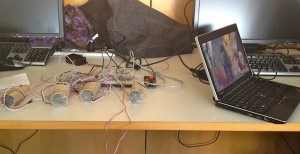
This paper documents the StepPiano project an interactive installation where the user triggers sounds through walking. To realize our project we use Arduino boards in combination with different sensors and output devices. We started this project as Arduino beginners and mainly used the approach: learning by doing also known as tinkering, as this is the usual way to work with Arduino. We used different sensors to challenge our-self intentionally so we could learn more about Arduino, its functions, the sensors and how all of that comes together.
The purpose of the documentation is also to help other students use Arduino and sensors. All code and circuit diagrams will be free to use for other students.
CAN Bus Simulation with CANoe from Vector
(Manuel Henle, Katrin Plaumann, Dirk Wendling)
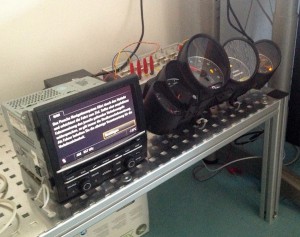
This paper topics the development of a can simulation using the CANoe software tools from Vector Informatik GmbH. The main purpose is to describe the use of the CANoe development environment for creating simulations and small CAN applications as well as the basics of the CAN standard. Describing the development of a small simulation running in CANoe. This application simulates and sends signals and messages. The computer running the simulation is connected to a head unit and the dashboard via the CAN bus. The connected hardware responds to the sent signals in an appropriate way.
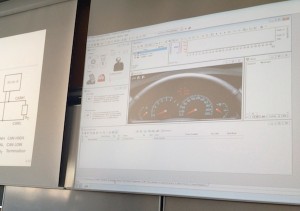
It is aimed that this project can be used as an introduction to working with CAN for future students. The development process is described as well as some insights on the CAN bus, standard, the use of simulations and the CANoe development environment. However, the main focus is on the development process.
iBooze – An iPhone controlled cocktail mixing machine
(Sven Straubinger, Patrick Nisch, Jonas Keeling and Dominik Huebner)
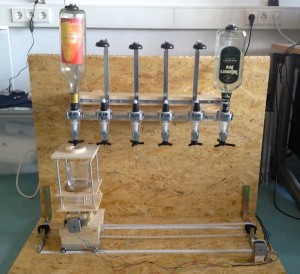
With the release of the External Accessory Framework in June 2009 Apple enabled its iPods, iPhones and iPads to connect to peripherals and external devices. As a proof of concept we built a cocktail mixing machine which is controllable by an iPhone. The machine is regulated by an Arduino board which is described in this paper as well as the hardware design and the defined communication protocol transmitted over Redpark’s serial cable adapter, which implements Apple’s Accessory Framework and provides an SDK which simplyfies serial communication by abstracting low level controls otherwise necessary.
iBooze and The Schnaps Machine
Developing an iOS Accessory
(Thomas Maier, Dominik Gätjens, Timo Lenz)
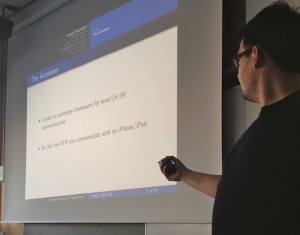
In cooperation with a local company the students developed an iOS accessory using an Atmel Controller. They also developed a little iOS app for testing purposes. The iOS accessory is used to control an automotive embedded systems testing system (Hardware in the Loop , HiL).
